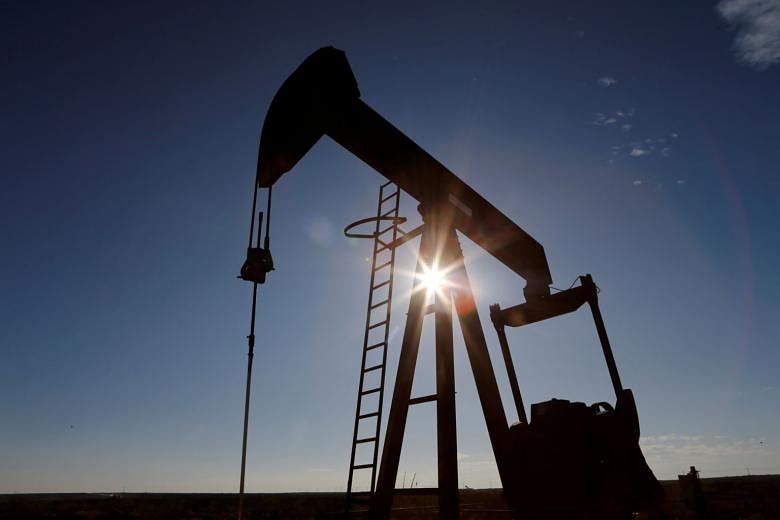SINGAPORE (REUTERS) - Muted oil price gains on Monday (April 13) show record output cuts by giant producers will still leave them with a mountain to climb to restore market balance, industry watchers said, with the coronavirus pandemic decimating demand just as stocks swell.
The morning after the Organization of the Petroleum Exporting Countries (Opec) and allies led by Russia agreed to reduce output by 9.7 million barrels per day (bpd) in May and June - equal to nearly 10 per cent of global supply - prices gained less than 5 per cent and are still 50-60 per cent down for the year so far.
That headline cut by the grouping known as Opec+ may be more than four times deeper than the previous record set in 2008, and may provide a floor for prices according to some analysts, but the reduction still dwarfed by the near 30 million bpd drop in demand in April already anticipated by forecasters like Goldman Sachs.
What's more, governments in countries around the globe are considering extending travel and social lockdown measures that have sapped fuel use in order to prevent the coronavirus from spreading.
"Even if these cuts provide a floor to prices they will not be able to boost prices given the scale of inventory builds we are still staring at," Energy Aspects analyst Virendra Chauhan said, referring to storage tanks and ships around the world the are filling up fast amid the slide in demand from end-users.
"The absence of hard commitments from the United States or other G20 members is (a) shortcoming of the deal."
G20 nations have been urged to help reduce the supply glut, but there was little detail on the outcome of Friday talks between energy ministers from the group and Saudi Arabia.
Meanwhile analysts said that while the core number in the deal suggests a near 10 million bpd cut, Middle East producers like Saudi Arabia, the United Arab Emirates and Kuwait will likely have to reduce by more than the 23 per cent cut to which they signed up, as they had begun to ramp up output in April amid a price war before the agreement was struck.
"This 9.7 million b/d 'headline' deal represents a 12.4 million bpd cut from claimed April Opec+ production (given the Saudi, UAE, Kuwait ongoing surge) but an only 7.2 million bpd cut from 1Q20 average production levels," Goldman Sachs analysts said in a note.
A veteran Singapore oil trader, who declined to be named due to company policy, pointed to inventory data as a key determining factor for future price trends.
"Inventory build will continue, albeit at slower pace due to the Opec+ cut," he said.
The next major focus for markets is watching for numbers from the US Department of Energy on filling its strategic petroleum reserves (SPR) with demand slumping, the trader said.
"Most of the SPR (held by countries around the world) are pretty full already. Probably China still has some room, but the rest, I doubt there is anything significant," he added.
The world's largest oil importer, China remains the outlier: Its refiners are set to raise crude oil throughput by 10 per cent this month from March as the country where the coronavirus originated at the end of last year recovers from the outbreak faster than elsewhere.
"China may be recovering, but China needs to export product to balance (its market), and therefore will ultimately be constrained given this is a demand, not supply-led issue," said Energy Aspects analyst Chauhan.











